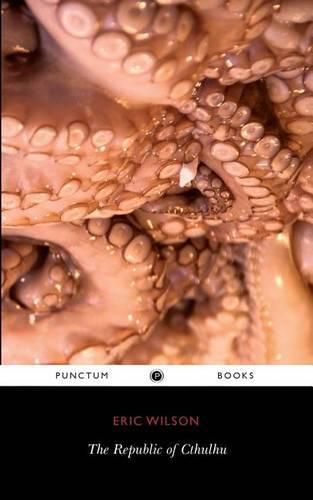Readings Newsletter
Become a Readings Member to make your shopping experience even easier.
Sign in or sign up for free!
You’re not far away from qualifying for FREE standard shipping within Australia
You’ve qualified for FREE standard shipping within Australia
The cart is loading…






If parapolitics, a branch of radical criminology that studies the interactions between public entities and clandestine agencies, is to develop as an academic discipline, then it must develop a coherent theory of aesthetics in order to successfully perform its primary function: to render perceptible extra-judicial phenomena that have hitherto resisted formal classification.Wilson offers the work of H.P. Lovecraft (1890-1937) as an example of the relevance of subversive literature-in this case, cosmic horror and the weird tale-to the parapolitical criminologist. Cosmic horror is a form of writing that relies heavily upon the epistemological assumption of a radical and irreconcilable disjunction between appearance and reality, perception and truth. In many ways, the well-constructed weird tale strongly resembles the hard-boiled detective story or the noir thriller in that the resolution of the narrative hinges upon a dramatically shattering confrontation with an unspeakable reality. Apart from its obvious utilization of conspiracy theory, the primary attraction of the Lovecraftian text lies with its remarkably sophisticated utilization of two central tropes of classical aesthetic theory-the sublime and the grotesque. Not only does Lovecraft’s oeuvre represent a remarkable use of both of these motifs, but the raw literary power of the Lovecraftian weird tale serves as an outstanding exemplar for the parapolitical scholar to emulate in formulating an alternative mode of discourse, or poetics.
$9.00 standard shipping within Australia
FREE standard shipping within Australia for orders over $100.00
Express & International shipping calculated at checkout
If parapolitics, a branch of radical criminology that studies the interactions between public entities and clandestine agencies, is to develop as an academic discipline, then it must develop a coherent theory of aesthetics in order to successfully perform its primary function: to render perceptible extra-judicial phenomena that have hitherto resisted formal classification.Wilson offers the work of H.P. Lovecraft (1890-1937) as an example of the relevance of subversive literature-in this case, cosmic horror and the weird tale-to the parapolitical criminologist. Cosmic horror is a form of writing that relies heavily upon the epistemological assumption of a radical and irreconcilable disjunction between appearance and reality, perception and truth. In many ways, the well-constructed weird tale strongly resembles the hard-boiled detective story or the noir thriller in that the resolution of the narrative hinges upon a dramatically shattering confrontation with an unspeakable reality. Apart from its obvious utilization of conspiracy theory, the primary attraction of the Lovecraftian text lies with its remarkably sophisticated utilization of two central tropes of classical aesthetic theory-the sublime and the grotesque. Not only does Lovecraft’s oeuvre represent a remarkable use of both of these motifs, but the raw literary power of the Lovecraftian weird tale serves as an outstanding exemplar for the parapolitical scholar to emulate in formulating an alternative mode of discourse, or poetics.